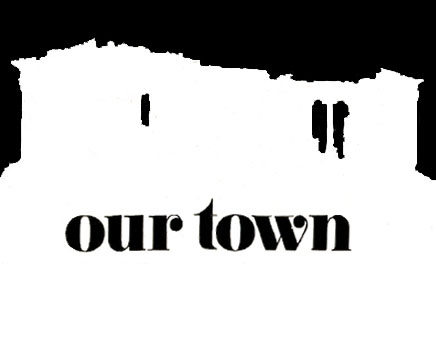
Speaking of that tradition, Borges dwelt on philosophy and myth, particularly on the creation of order out of chaos and the Cretan myth of Theseus and the Minotaur. Borges concluded, “if the world is chaos, then we are lost; if the world is a labyrinth, then there is hope.”
Whether the celebrated Argentinian poet, stopping on his way to Crete in Athens in the first throes of the pre – Euroelections compaign, found chaos or a labyrinth has not been recorded, but in any case the long and lively tradition of Greek electioneering was in full swing.
Complaints are heard that Athenians do not read enough books or newspapers, but why should they when there is so much fascinating literature surrounding them on billboards, buses, fliers and trashbins? “Yes”, “No”; “For”, “Against”; “Change”,”Real Change”, “A New March towards Change”, “Greece First”, “Greek Products First”, “A Contract with the People”, “What Contract with the People?”, “Such – and – such a number unemployed every 24 hours.”
The real innovation during the present campaign is that sloganeering has taken to the skies, not with skywriting, of course, (which would be as futile in the city of the nefos as Sisyphus rolling his stone uphill) but with flying banners. In part, this ‘allaghi’ is due to the grumpiness of former city governments which, in the post-election dumps that follow every campaign ‘high’, have complained about the astronomical costs of cleaning up the walls defaced by adhesive slogans.
The condition and even the positions of these thousands of banners, crisscrossing every thoroughfare like laundry lines in oriental cities, depend very much on the weather. On breezy days they billow so gaily that pedestrians following all this reading matter are in danger of falling into one of those unannounced trenches that the utility services are always opening up and then forgetting to fill in. On low-pressure nefos days they hang down forlornly like rags draped over rooftops and kiosks. It’s on windy days, now that the meltemi season approaches, that things get really exciting with PASOK green suns, alternately rising and setting; N.D. torches; hammers, sickles and French revolutionary caps all getting snarled up in mulberry trees, entangled in telephone wires and, most hazardously, twisted around car aerials. Having a banner suddenly spread out over a windscreen exhorting the driver to support the E.C., to get out of the E.C., or to change whatever he might otherwise have in mind, while traversing a crossing whose signal light is wrapped up in cloth like a mummy, is more likely to have him entering the ΚΑΤ emergency hospital than Strasbourg or Brussels.
A high goverment official has been reported as saying that all this colorful bunting is attracting tourism, and if Europeans are looking for third world picturesqueness, it is true they can economize by finding it right on their own continent. In the color category KKE takes first prize. PASOK is hopelessly hooked on green and ND on blue, and KODISO and the Communists of the interior are both much too serious to be considered colorful at all. But KKE has imagination. ‘Yes’ is usually red, ‘No’ blue and ‘EC brownish, but ‘Allaghi’ changes color quite often — yellow, pink, orange — no two banners are quite alike.
But getting back to Borges: is all this chaotic or labyrinthine? As the winds continue to rise, the banners blow away. In the blustery northern suburbs, there are not many left. Meanwhile, political leaders are growing hoarse with so much talk that the decibel count is dropping, too. Most likely the campaign will end in a labyrinth of rubbish which will take a long time to clean up — in which case, at least hope will have survived.








